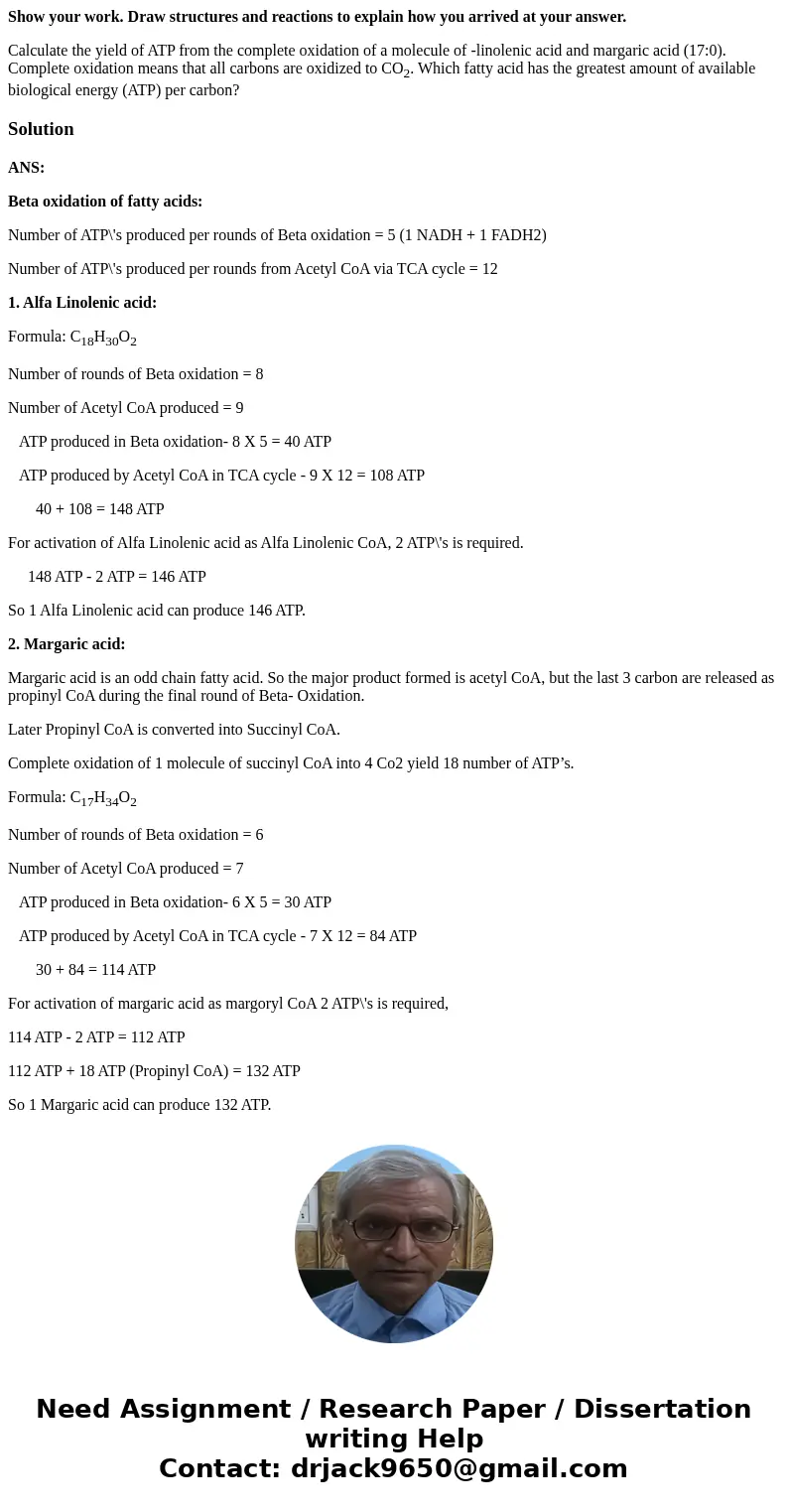Show your work Draw structures and reactions to explain how
Show your work. Draw structures and reactions to explain how you arrived at your answer.
Calculate the yield of ATP from the complete oxidation of a molecule of -linolenic acid and margaric acid (17:0). Complete oxidation means that all carbons are oxidized to CO2. Which fatty acid has the greatest amount of available biological energy (ATP) per carbon?
Solution
ANS:
Beta oxidation of fatty acids:
Number of ATP\'s produced per rounds of Beta oxidation = 5 (1 NADH + 1 FADH2)
Number of ATP\'s produced per rounds from Acetyl CoA via TCA cycle = 12
1. Alfa Linolenic acid:
Formula: C18H30O2
Number of rounds of Beta oxidation = 8
Number of Acetyl CoA produced = 9
ATP produced in Beta oxidation- 8 X 5 = 40 ATP
ATP produced by Acetyl CoA in TCA cycle - 9 X 12 = 108 ATP
40 + 108 = 148 ATP
For activation of Alfa Linolenic acid as Alfa Linolenic CoA, 2 ATP\'s is required.
148 ATP - 2 ATP = 146 ATP
So 1 Alfa Linolenic acid can produce 146 ATP.
2. Margaric acid:
Margaric acid is an odd chain fatty acid. So the major product formed is acetyl CoA, but the last 3 carbon are released as propinyl CoA during the final round of Beta- Oxidation.
Later Propinyl CoA is converted into Succinyl CoA.
Complete oxidation of 1 molecule of succinyl CoA into 4 Co2 yield 18 number of ATP’s.
Formula: C17H34O2
Number of rounds of Beta oxidation = 6
Number of Acetyl CoA produced = 7
ATP produced in Beta oxidation- 6 X 5 = 30 ATP
ATP produced by Acetyl CoA in TCA cycle - 7 X 12 = 84 ATP
30 + 84 = 114 ATP
For activation of margaric acid as margoryl CoA 2 ATP\'s is required,
114 ATP - 2 ATP = 112 ATP
112 ATP + 18 ATP (Propinyl CoA) = 132 ATP
So 1 Margaric acid can produce 132 ATP.
Conclusion: Alfa Linolenic fatty acid has the greatest amount of available biological energy (ATP) per carbon.

 Homework Sourse
Homework Sourse